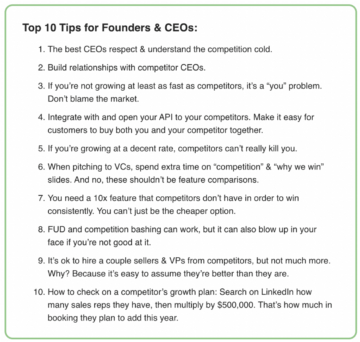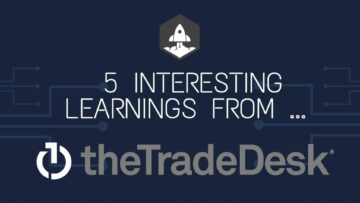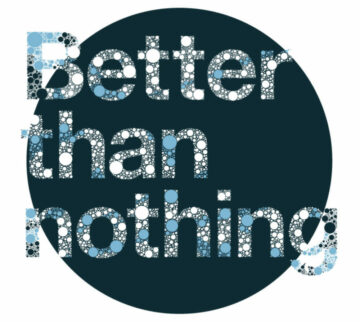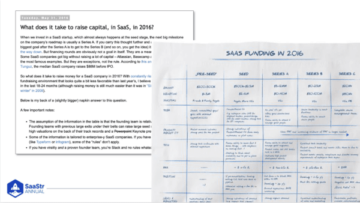There are two types of SaaS companies in the world: those that are category creators and the challengers of incumbent technology.
At SaaStr APAC 2023, Scott Pugh, VP of Sales at Figma, shared how to scale these two sales teams while building culture.
Pugh’s strategy is simple, albeit not always easy:
- Recruitment — how to hire the best talent to scale your sales organization.
- Enablement — setting your team up for success and investing in their professional growth.
- Culture — developing sub-cultures within sales that enable the team to scale successfully.
A Company’s Success Starts With Recruitment
Whether you’re a category creator or challenger, you likely have some hiring challenges because (1) competition doesn’t exist or (2) you don’t want to hire from a company you’re trying to disrupt.
Let’s look at five tips to consider for successful recruiting.
- Define your hiring profile.
Focus on the hiring profile. Personality, startup skills, and softer skills are all important — grit and resilience are key for Pugh and should be for any startup SaaS salesperson.
The hiring profile should define the hiring process and the questions you ask candidates. - Diversity is really important when scaling.
You want your sales team to represent the customers you serve and aspire to serve. Look at people’s geographies, ethnicities, cultures, gender, sexual orientation, and educational background.
One diversity you don’t want is negativity. If you find any negativity in your business, cut it out because it’s like a virus. You can watch for negativity based on candidate answers and feedback during recruiting. - Opt for an exclusive in-house or RPO recruiting partner.
A designated partner means lower rejection rates at the very first interview. An exclusive partner ensures they’re focused on the outcome and only delivering candidates who are the right fit for the company.
Once you have the right hiring panel in place, ask the right questions around the hiring profile and conduct in-depth background checks and back-channel background checks through your network for a full 360 view of the candidate.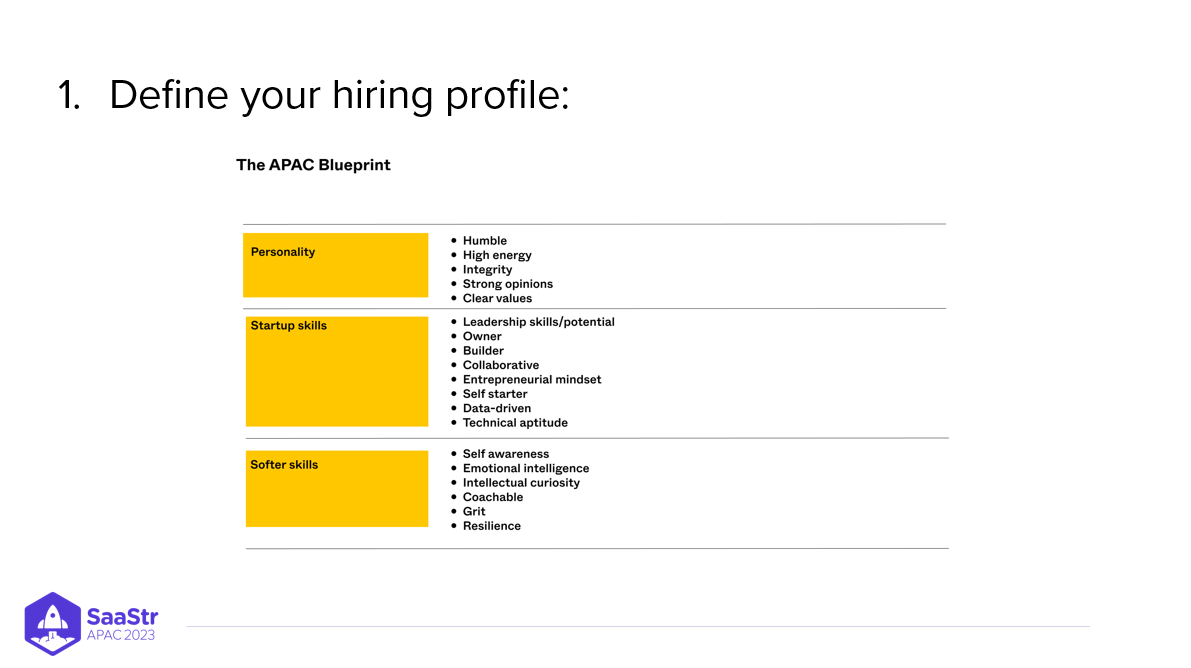

- Hire talent magnets.
Whenever possible, hire people who have a track record of bringing people with them to their new companies. You can encourage this behavior by establishing a generous referral fee. - Don’t overhire.
It’s a tough time in the SaaS industry right now. Pugh recommends staggering the recruitment process vs. bringing on 20 people simultaneously. This way, you can assess where the business is, especially in a constantly changing market.
You’ve Hired Your Team. Now, You Must Help Them.
Helping your sales team doesn’t mean you must spend all your time coaching them. Instead, develop a scalable, streamlined enablement process to eliminate any bottlenecks in success.
How do you set your team up for success and invest in their professional growth?
- Invest in enablement.
On Pugh’s first day on the job back when he worked at LinkedIn, they told him that when he left the company, they wanted him to go away, having changed the trajectory of his career. It was an upfront social contract saying, “Hey, we know you’ll leave eventually. Let’s make this the best experience possible.”
- Invest in the right tools to help enablement.
Tools like Notion, Showpad, and Workcramp can make your enablement program more effective. Products like Gong and Chorus offer you revenue intelligence so you can learn what the sales team is doing and iterate as needed.

- Create a buddy system.
As you scale quickly, it’s challenging to be there for everyone all the time. To avoid this snag, set up a buddy system where you pair more tenured salespeople with new hires, helping to support, enable, and train them.
A scalable buddy system allows people to learn coaching and leadership skills.
- Don’t discount empathetic leadership.
Give room for your team to fail, grow, and learn. To do that, you need a solid hiring process. Trust that hiring process because if you’ve hired the right people, they’ll be successful. If they’re not, you likely need to fix something within your business.
- Set correct goals for the sales team and the right ramp for their quotas.
Typically, we see a 5-month ramp for an enterprise sales rep. For SMB mid-market, it’s typically around 2-3 months. So give that room for people to grow into and achieve their numbers.
“Culture Eats Strategy For Breakfast”
Peter Drucker said that quote, and it’s true. It doesn’t mean you don’t need strategy, but without culture, it’s useless.
Pugh says, “When you build culture, it helps democratize decision-making across the business. It builds the framework to enable people to make decisions without having to go up and ask other people.”
Let’s look at five ways to build a powerful company culture.
- Iterate on culture and values.
Most things in life require iteration. Figma announced its fifth culture and value, which is play. Your company values can evolve and scale with the stage of your business.
- Align your teams around your culture and values.
It’s all fine and dandy for a CEO to hand out a code of values and say, “this is how we’re doing things.” It’s another for the team to actually operate according to those values.
So, create opportunities for your team to feel a certain degree of ownership for those values.

- Create a safe space within your business.
It’s a tough world out there in SaaS at the moment. There are a lot of external factors impacting business. Simon Sinek shares this concept in his book, Leaders Eat Last. Your organization should be a safe space, and everything external is the danger. This creates an environment of unity, safety, autonomy, and trust.
- Lead from the front.
As leaders, we need to set the standard, demonstrate that standard, and then hold people accountable. This aligns with a company’s culture, values, and many other things.
At Figma, the interview process is the same for salespeople and sales leaders. The CRO gets a demo just like everyone else.
- Create an environment of recognition and feedback.
People love to hear positive feedback. It makes us feel good and is a great way to build culture. Constructive feedback is also important. So remember that constructive feedback means a compassionate, one-on-one conversation, while positive recognition can be done in a group setting to boost morale.
If you combine these three areas of recruiting the best talent, enabling them to be successful, and building a culture that makes people love what they do, your sales team can be the engine for you becoming the next billion-dollar startup.
- SEO Powered Content & PR Distribution. Get Amplified Today.
- Platoblockchain. Web3 Metaverse Intelligence. Knowledge Amplified. Access Here.
- Source: https://www.saastr.com/scaling-a-saas-sales-team-while-building-culture-with-scott-pugh-vp-of-sales-at-figma-pod-639-video/
- 1
- 2019
- 2023
- a
- According
- Achieve
- across
- actually
- Aligns
- All
- allows
- always
- and
- announced
- Another
- answers
- APAC
- areas
- around
- avoid
- back
- background
- based
- because
- becoming
- BEST
- book
- boost
- bottlenecks
- Bringing
- build
- Building
- builds
- business
- Campaign
- candidate
- candidates
- Career
- Category
- ceo
- certain
- challenger
- challenges
- challenging
- changing
- Chapter
- Checks
- coaching
- code
- COM
- combine
- Companies
- company
- Company Culture
- Company’s
- competition
- concept
- Conduct
- Consider
- constantly
- content
- contract
- Conversation
- create
- creates
- creator
- creators
- CRO
- Culture
- Customers
- Cut
- DANGER
- data
- day
- Decision Making
- decisions
- Degree
- delivering
- Demo
- democratize
- demonstrate
- designated
- develop
- developing
- Discount
- Disrupt
- Diversity
- Doesn’t
- doing
- Dont
- during
- easy
- eat
- educational
- Effective
- eliminate
- embedded
- enable
- enabling
- encourage
- Engine
- ensures
- Enterprise
- Environment
- especially
- establishing
- eventually
- everyone
- everything
- evolve
- Exclusive
- experience
- external
- factors
- FAIL
- fee
- feedback
- figma
- Find
- fine
- First
- fit
- Fix
- focused
- Framework
- from
- front
- full
- Gender
- generous
- geographies
- Give
- Go
- Goals
- good
- great
- Group
- Grow
- Growth
- hand
- having
- hear
- help
- helping
- helps
- hire
- hires
- Hiring
- hold
- How
- How To
- HTTPS
- important
- in
- in-depth
- Incumbent
- industry
- instead
- Intelligence
- Interview
- Invest
- investing
- IT
- iteration
- Job
- Key
- Know
- leaders
- Leadership
- LEARN
- Leave
- Life
- likely
- Look
- Lot
- love
- Magnets
- make
- MAKES
- many
- March
- Market
- max-width
- means
- mid-market
- moment
- months
- more
- Need
- needed
- network
- New
- next
- Notion
- numbers
- offer
- operate
- opportunities
- organization
- Other
- Outcome
- ownership
- panel
- partner
- People
- people’s
- Personality
- Place
- plato
- Plato Data Intelligence
- PlatoData
- Play
- positive
- possible
- powerful
- process
- Products
- professional
- Profile
- Program
- Questions
- quickly
- Ramp
- Rates
- recognition
- recommends
- record
- recruiting
- recruitment
- Referral
- remember
- represent
- require
- resilience
- revenue
- Room
- SaaS
- safe
- Safety
- Said
- sales
- Salespeople
- Salesperson
- same
- says
- scalable
- Scale
- scaling
- serve
- set
- setting
- Sexual
- shared
- Shares
- should
- Simon
- Simple
- simultaneously
- site
- skills
- SMB
- So
- Social
- social contract
- solid
- some
- something
- Space
- spend
- Stage
- standard
- starts
- startup
- Strategy
- streamlined
- subscribers
- success
- successful
- Successfully
- support
- system
- Talent
- team
- teams
- Technology
- The
- the world
- their
- things
- three
- Through
- time
- tips
- Title
- to
- tools
- track
- Train
- trajectory
- true
- Trust
- types
- typically
- unity
- us
- value
- Values
- Video
- View
- virus
- visitors
- wanted
- Watch
- ways
- What
- which
- while
- WHO
- within
- without
- worked
- world
- Your
- youtube
- zephyrnet

